News
Tipi Raising Demonstration Held at Brinton Museum
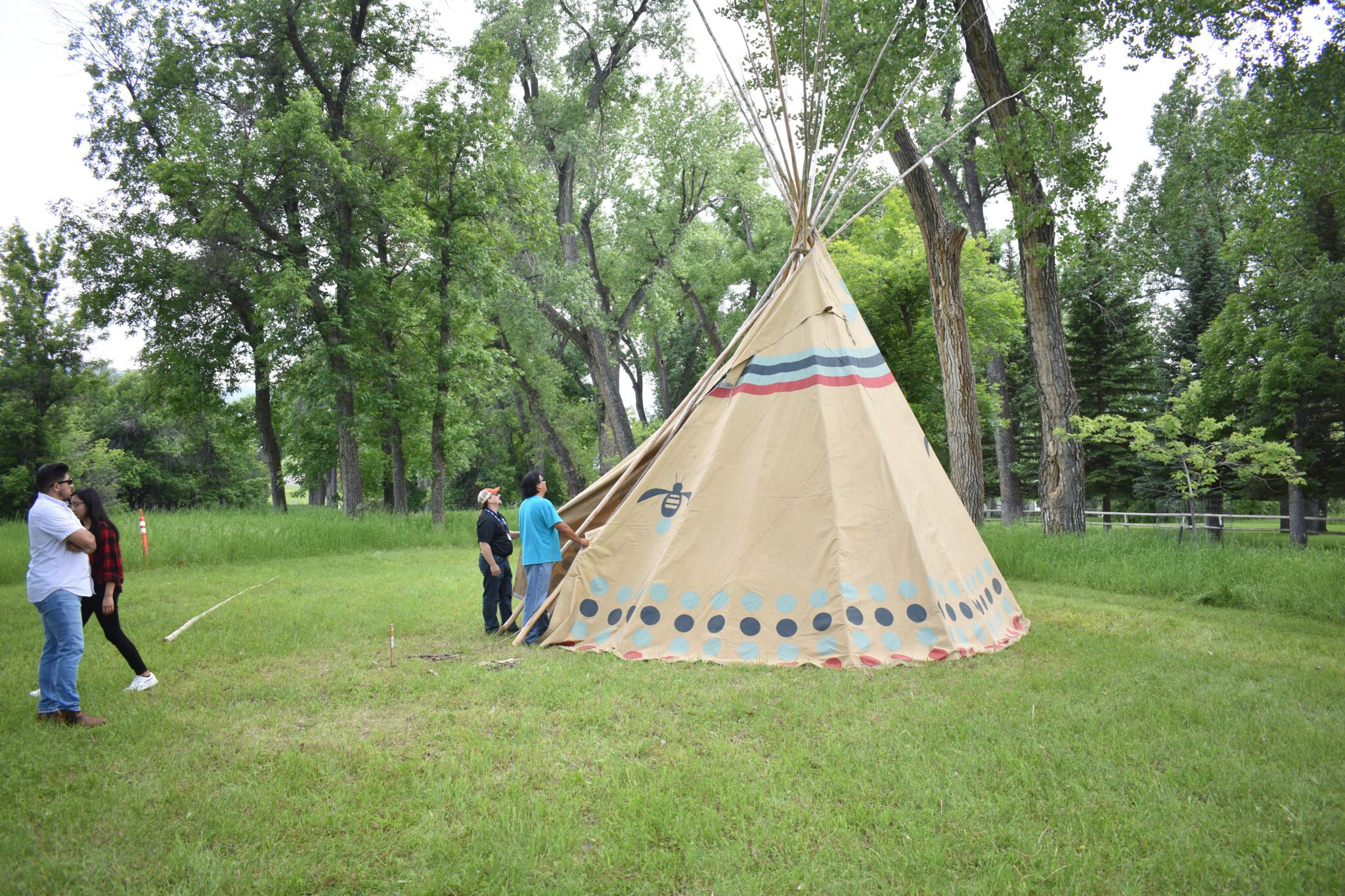
The Plains Indian Tribes, including the Cheyenne, Sioux, Crow, and Kiowa, used the tipi as basically the first mobile home. With their lifestyle of following the buffalo herds, they needed lodging that could be easily moved from place to place, using only dogs at first and later horses to move the lodge.
The tipi fit this need. Made of long wood poles, usually lodgepole pine, covered in tanned buffalo hide, the tipi could be quickly erected and taken down.
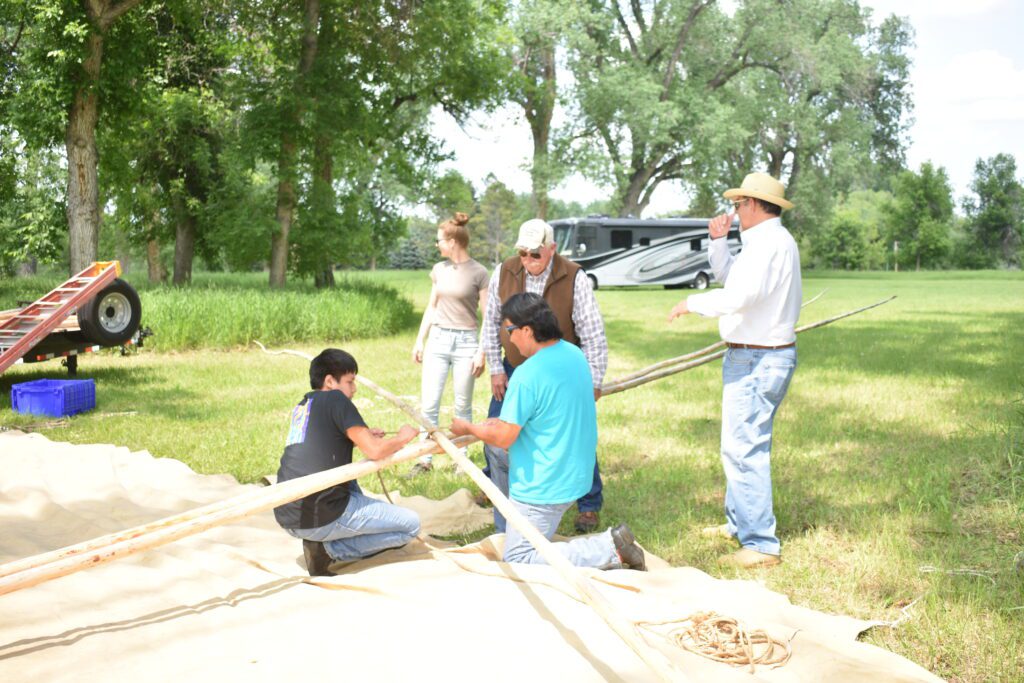
Brinton Museum Board Liaison Wallace Bear Chum and his son, Myron Red Sleeves, of the Northern Cheyenne Tribe who live at Lame Deer, Montana, gave a demonstration on June 13 at the Brinton Museum grounds on how his tribe traditionally raised the tipi.
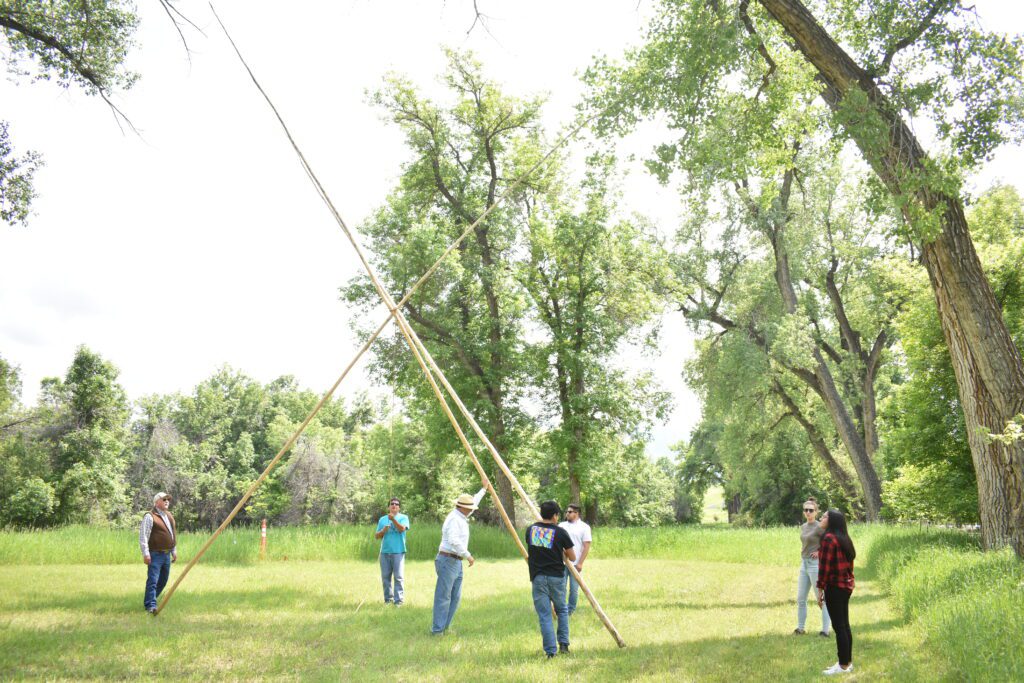
First were the lodgepoles, from 18 to 20 foot long. Three lodgepoles were tied together near the top, and then stood up in a triangle shape. As soon as this was erected, the other poles were added and lashed together with rope. Traditionally, Bear Chum said, the rope would have been made of braided rawhide.
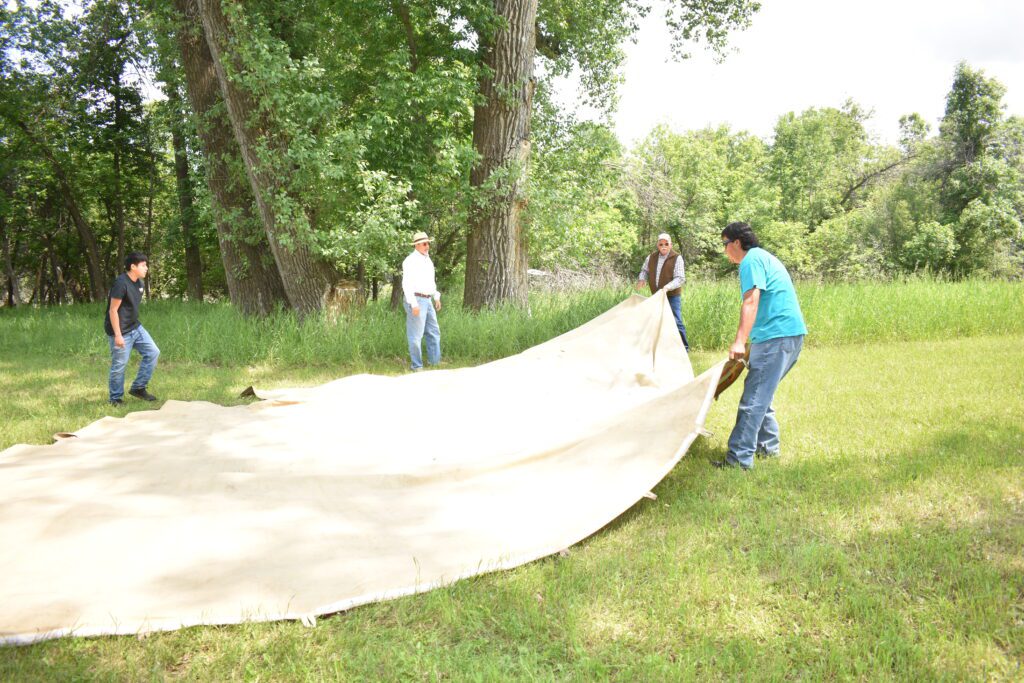
Once the poles were in place, the cover was rolled up and placed on the poles. “We use 17 poles,” Bear Chum said.
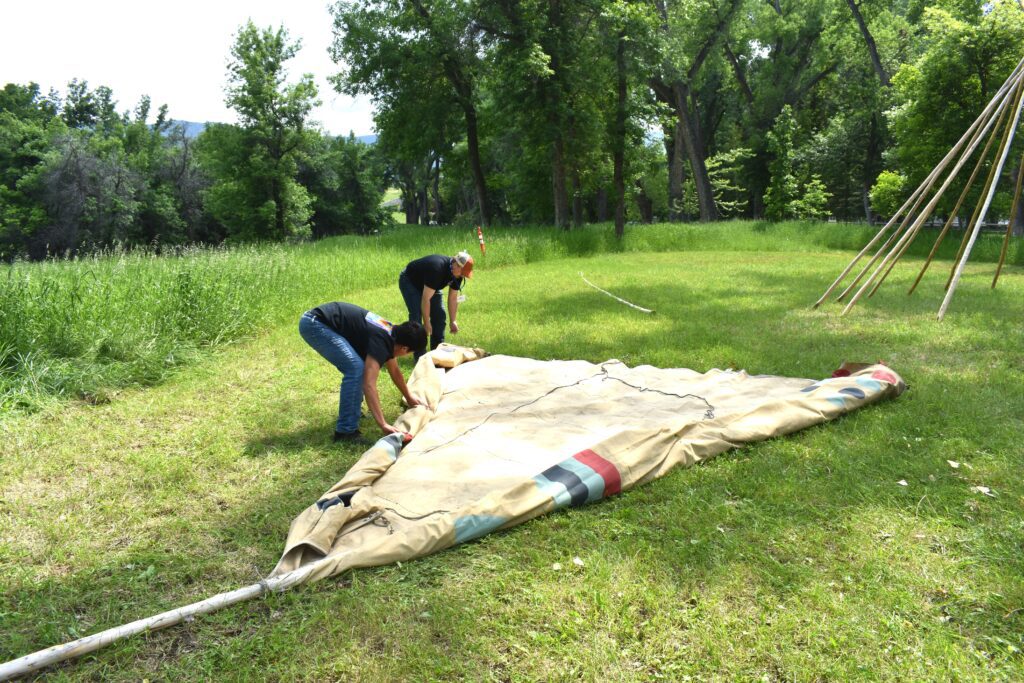
The tipi they erected was around 18 foot around, but they were usually smaller in the older days, although the council lodge was usually larger than the family tipis and was used for meetings and tribal councils. Most of the time the tipi entryway faced east toward the rising sun, but if they were erected around a council tipi, the lodges faced the council lodge.
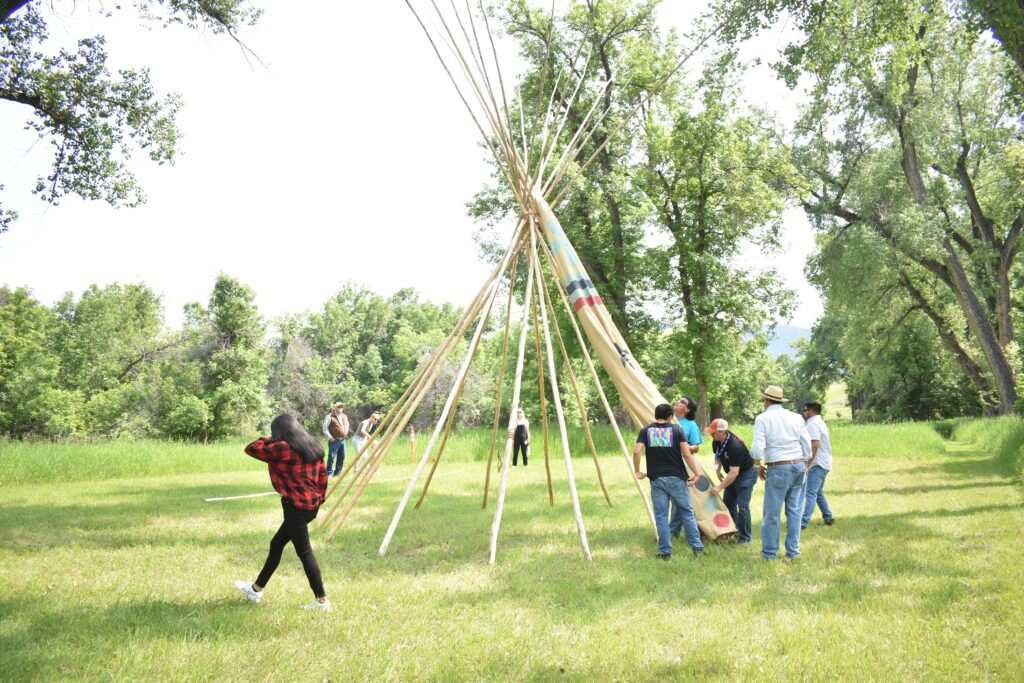
It took around 18-20 buffalo hides to make a tipi 18 foot in diameter. Today, the tipi is made with a canvas cover. Traditionally, the women raised the tipi and took it down when they struck camp.
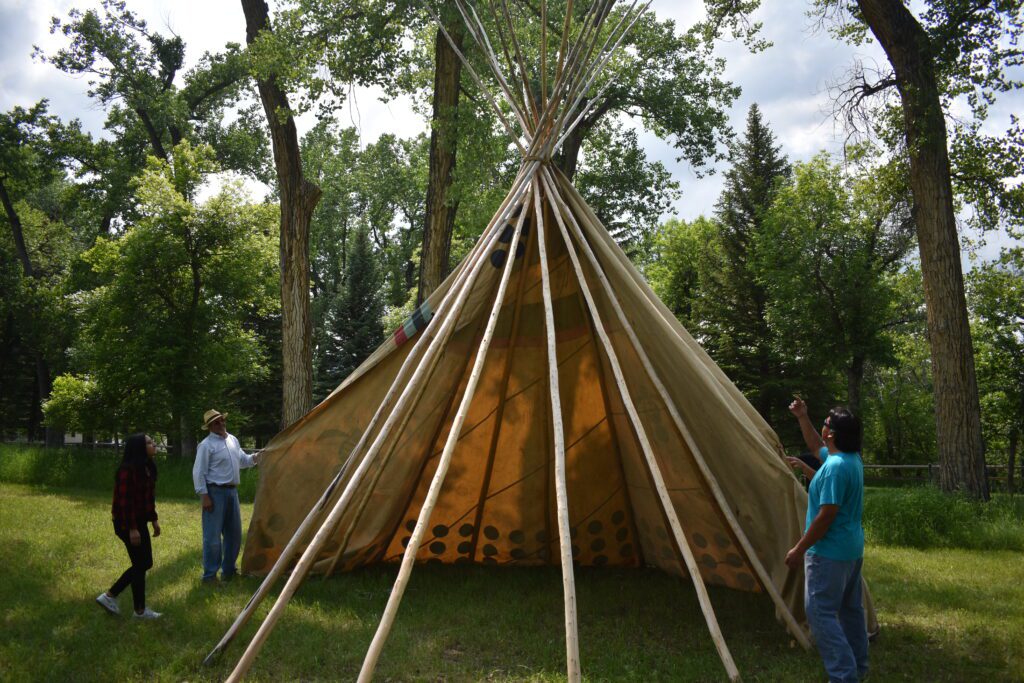
Today some tribes have tipi races between teams. Bear Chum said his team could put up a tipi in nine minutes. Tipi races were also a feature at All-American Indian Days that was held in Sheridan between 1953 and 1984.
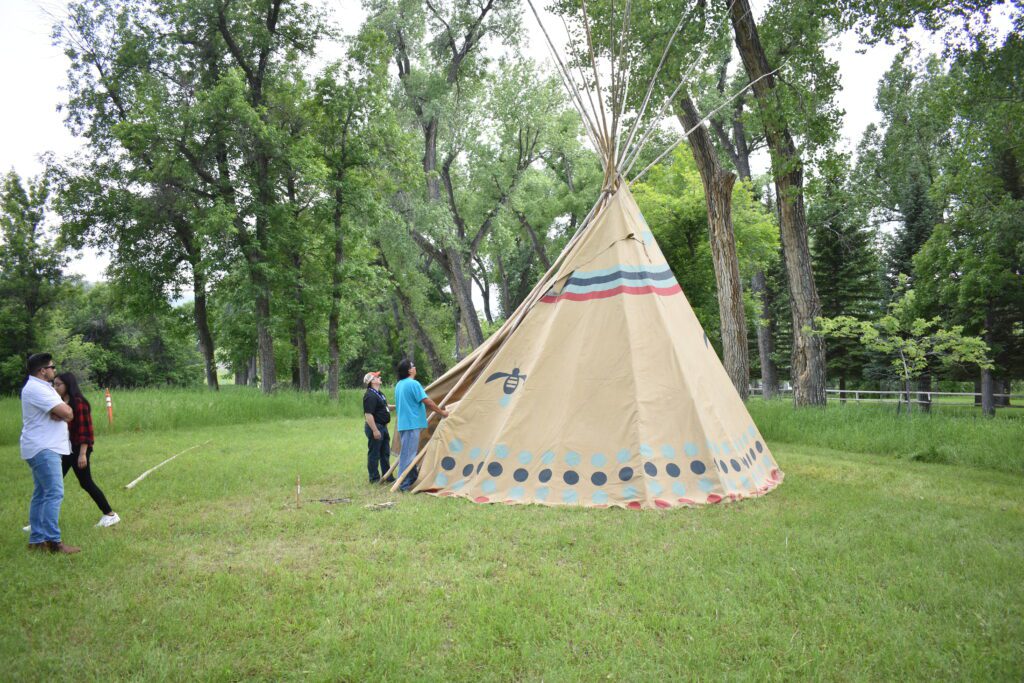
Several tribes did have painted tipi covers, the Crow, however, traditionally had white lodges. The Cheyenne tipis were painted with a warrior’s deeds, or pictures representing his name, “I would have had a bear painted on mine,” Bear Chum said. Usually, a family member with an artistic bent would paint the tipi.
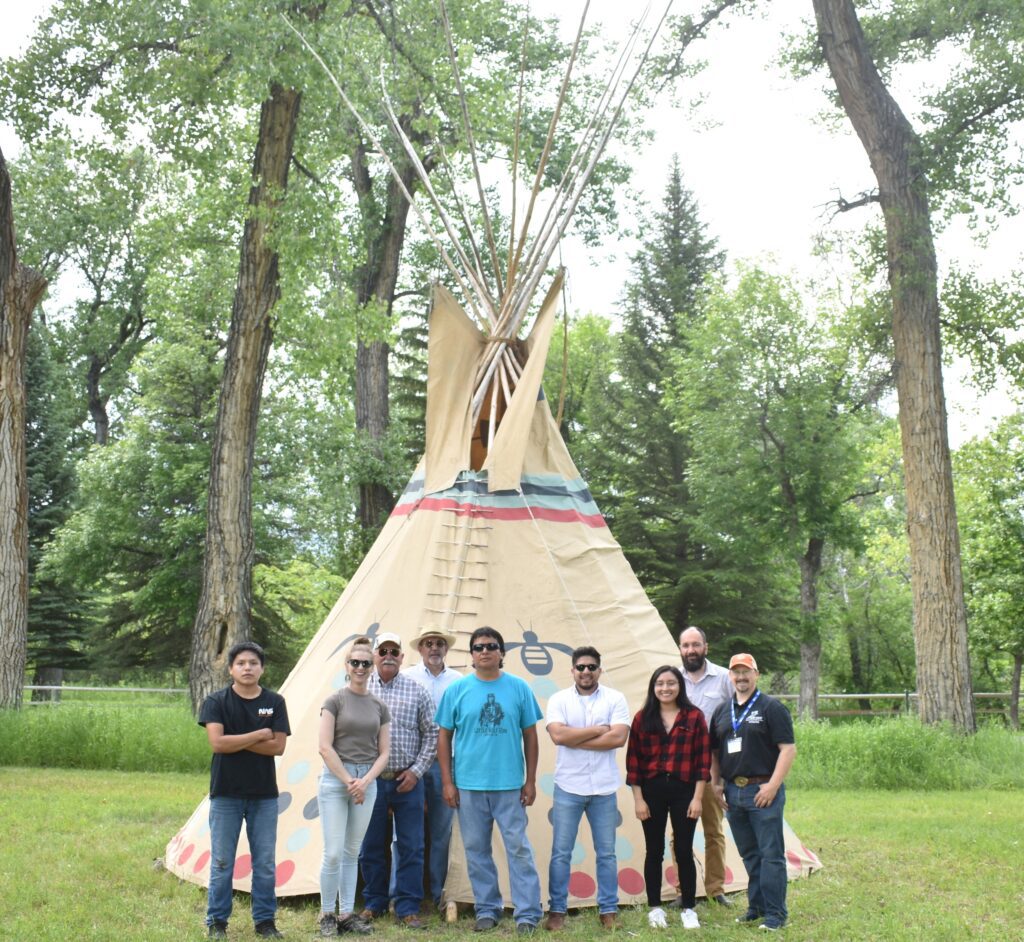
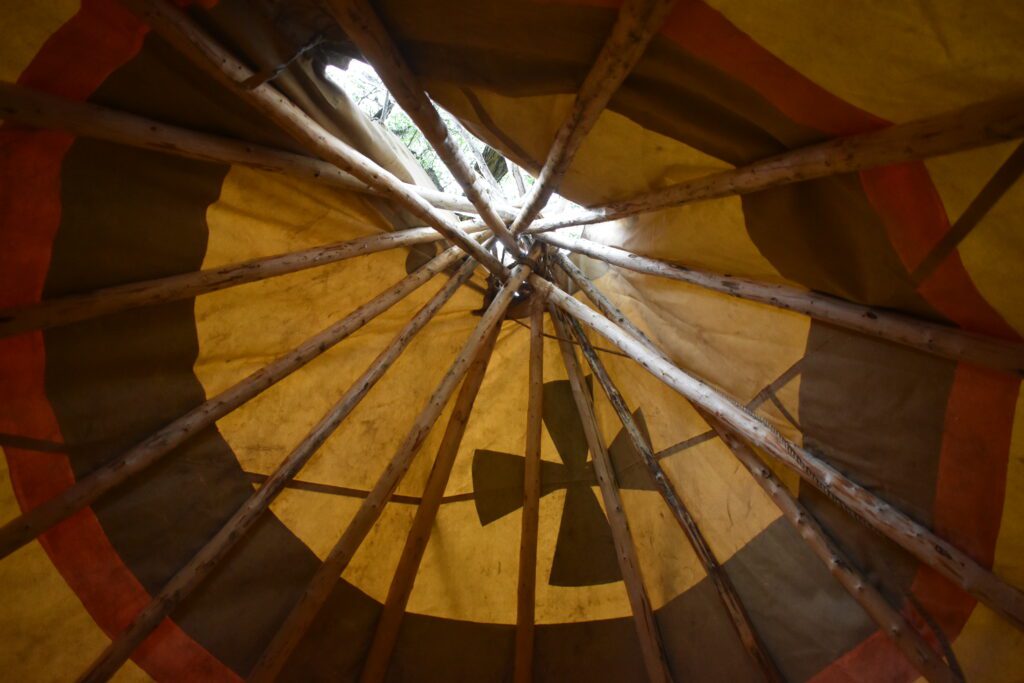
The tipi will stand on the Brinton Museum Grounds all summer.

